10 Best Ways to Display Art in Your Home
Discover the best ways to display art in your home with expert tips on placement, lighting, gallery walls, framing, and styling techniques to enhance your space with personality and elegance.
DECORATING
3/19/2025
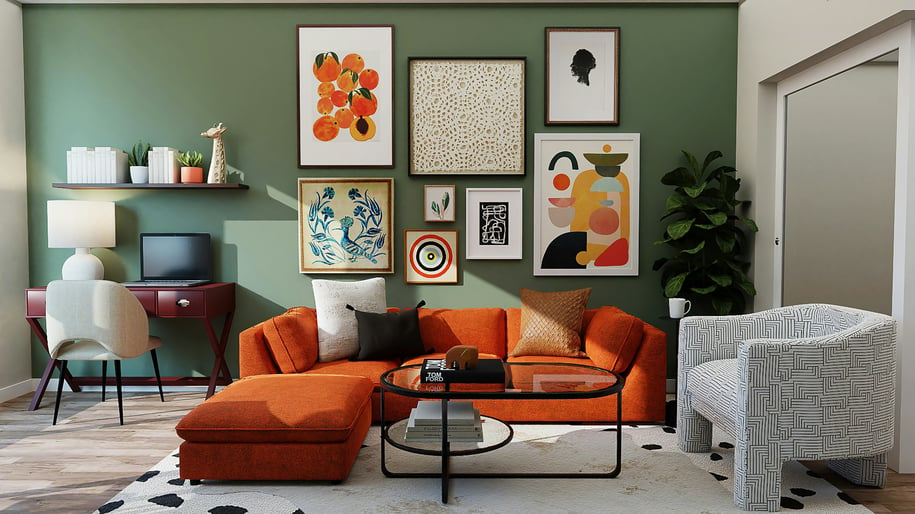

Art has the power to transform any living space, adding personality, color, and depth to your home. Whether you own original paintings, prints, or sculptures, how you display them can significantly impact the overall aesthetic of your interior design. From gallery walls to statement pieces, there are countless creative ways to showcase your art collection. In this blog, we’ll explore the 10 best ways to display art in your home, offering detailed tips to help you create a visually stunning and cohesive look..
Create a Gallery Wall for a Bold Statement
Lean Artwork for a Casual, Effortless Vibe
Use Picture Ledges for Flexible Displays
Make a Statement with Oversized Art
Incorporate Art into Shelving Displays
Hang Art in Unexpected Places
Layer Art for a Dynamic Look
Use Lighting to Highlight Your Art
Mix Art with Mirrors for Depth
Rotate Your Art Seasonally
1. Create a Gallery Wall for a Bold Statement
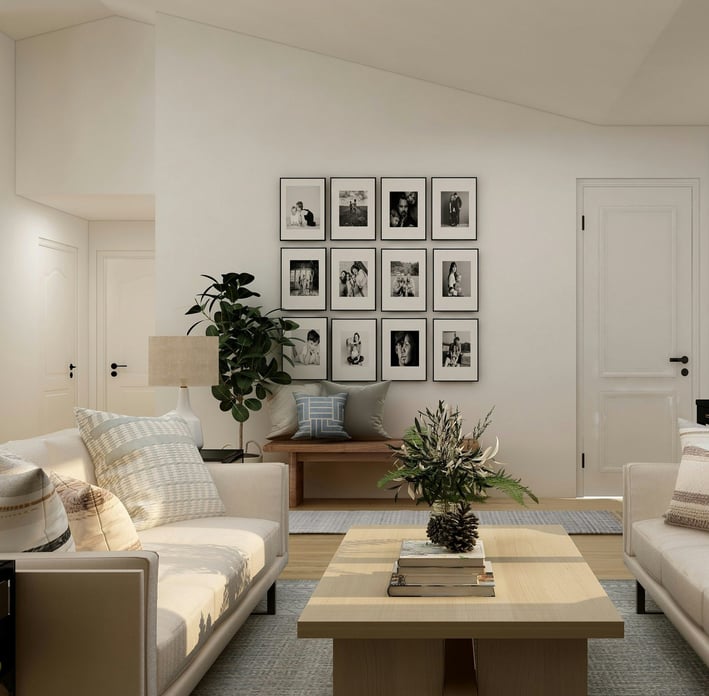

If you prefer a more relaxed and modern approach, leaning artwork against the wall is a great option. This method works exceptionally well on mantels, console tables, or shelves. Large pieces can be leaned against a bare wall to create a dramatic effect, while smaller pieces can be layered in front for depth. This style is perfect for those who like to frequently change their décor, as it requires no nails or hooks.
Pair leaned artwork with decorative objects like vases, candles, or books to enhance the aesthetic. The key is to maintain balance—ensure the arrangement doesn’t look cluttered but rather intentional and stylish.


Picture ledges are an excellent solution for those who love to rotate their art collection. These slim shelves allow you to easily swap out pieces without damaging walls.
Install them in a series for a tiered effect or use a single ledge for a minimalist look. Picture ledges work well in living rooms, bedrooms, and even bathrooms. You can display framed art, unframed prints, or even small objects for added dimension. The best part? They’re incredibly versatile—adjust the spacing and arrangement whenever you want a fresh look without the hassle of rehanging frames.
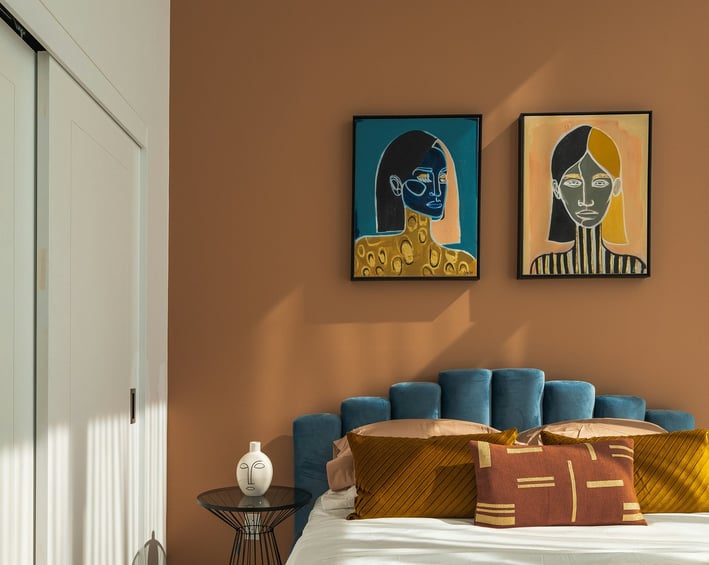

A single oversized piece can instantly elevate a room, serving as a striking focal point. Large-scale art works best in spacious areas like above a sofa, bed, or dining room wall. Choose a bold painting, abstract print, or even a large photograph that complements your décor. The impact of a big artwork lies in its ability to command attention while tying the room’s color scheme together.
If original large pieces are expensive, consider high-quality reproductions or DIY canvas prints. Pairing oversized art with minimalist furniture ensures the artwork remains the star of the space.
A gallery wall is one of the most popular and dynamic ways to display art in your home. This arrangement allows you to mix and match different sizes, styles, and frames for an eclectic yet curated look. Start by selecting a focal wall—preferably in the living room, hallway, or staircase—and lay out your frames on the floor to experiment with spacing.
Use a mix of paintings, photographs, and even small sculptures to add texture. For a cohesive appearance, stick to a consistent color palette or theme. Floating shelves can also be incorporated to break the monotony of framed pieces. A well-designed gallery wall not only showcases your art but also becomes a conversation starter.
3. Use Picture Ledges for Flexible Displays
2. Lean Artwork for a Casual, Effortless Vibe
4. Make a Statement with Oversized Art
Bookshelves and floating shelves aren’t just for books—they’re perfect for displaying art too. Intersperse framed prints, small sculptures, and decorative objects among your books for a layered, curated look.
This method adds visual interest and allows you to showcase multiple pieces without overwhelming the space. Play with varying heights and textures to create depth. For a cohesive appearance, stick to a consistent color scheme or theme. Open shelving in the kitchen or bathroom can also be used to display small artworks, adding personality to functional spaces.
5. Incorporate Art into Shelving Displays
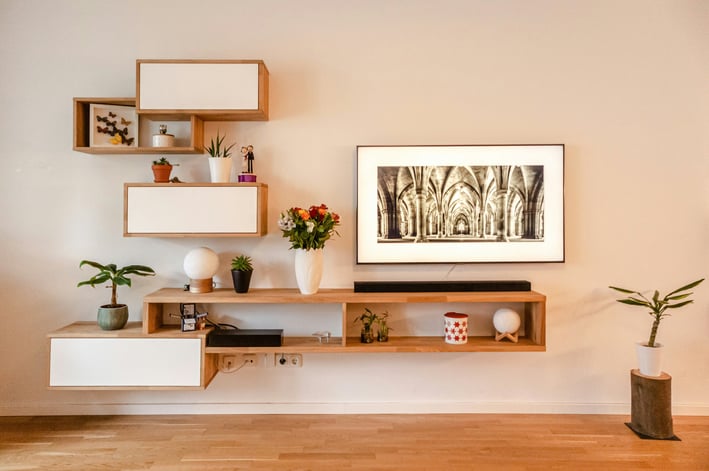

6. Hang Art in Unexpected Places

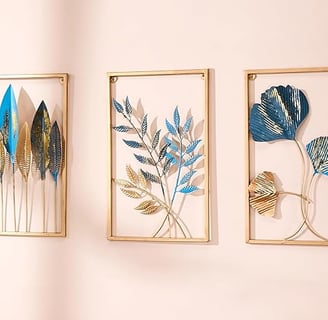
Who says art should only be displayed on main walls? Think outside the box by hanging artwork in unconventional spots like the bathroom, laundry room, or even inside closets.
Small framed prints or water-resistant art can add charm to a powder room, while motivational pieces in a home office can boost productivity. Even narrow hallways or stair landings can benefit from carefully placed art. The key is to ensure the pieces are appropriately sized for the space—smaller areas call for smaller artworks to avoid a cramped feel.
7. Layer Art for a Dynamic Look
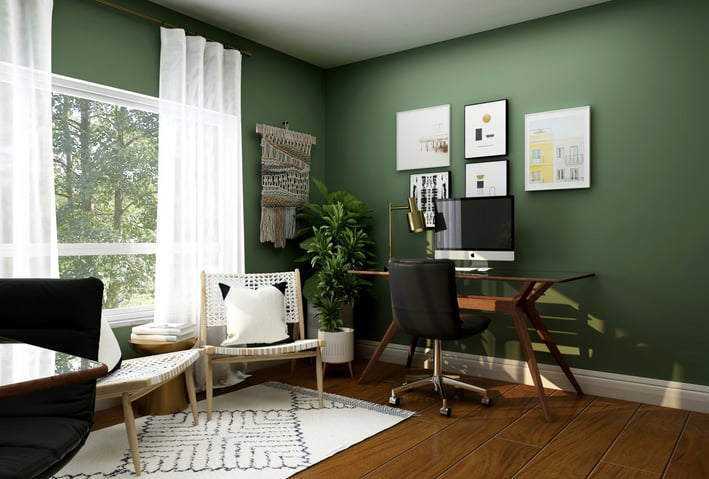

Layering art creates depth and visual intrigue. Place smaller pieces in front of larger ones, or overlap frames for an eclectic vibe. This technique works well on mantels, shelves, or even directly on walls using staggered hooks. Mix different mediums—such as paintings, mirrors, and textiles—for added texture. The layered approach feels organic and collected over time, making your space feel more lived-in and personal. Just be mindful of balance; too much overlapping can look chaotic rather than curated.
8. Use Lighting to Highlight Your Art
Proper lighting can dramatically enhance how your art is perceived. Track lighting, picture lights, or even strategically placed spotlights can draw attention to your favorite pieces. For a dramatic effect, use LED strips behind canvases for a floating illusion. Natural light can also play a role, but be cautious of direct sunlight, which may fade artwork over time.
Lighting not only improves visibility but also adds ambiance, making your art a true centerpiece.
9. Mix Art with Mirrors for Depth
Mirrors can amplify the impact of your art by reflecting light and creating the illusion of space. Hang a decorative mirror alongside paintings or photographs to enhance visual interest. A well-placed mirror can also make a small room feel larger while complementing nearby artwork. Choose frames that match your art for a cohesive look, or go for contrasting styles for an eclectic touch.
10. Rotate Your Art Seasonally
Keep your home feeling fresh by rotating artwork with the seasons or your changing tastes. Swap bold, vibrant pieces in summer for cozy, muted tones in winter. This approach keeps your décor dynamic and allows you to enjoy different pieces throughout the year. Storage solutions like portfolio cases or dedicated shelves make it easy to store and retrieve art as needed.
Final Thoughts
Displaying art in your home is all about creativity and personal expression. Whether you opt for a gallery wall, oversized statement pieces, or layered arrangements, the right display method can transform your space. Experiment with these 10 best ways to display art in your home to find what works best for your style.
MOST READ
HOUSE TOURS
Stunning 2700 Sq. Ft. Nalukettu Home with a Modern Touch
2 MIN READ
HOUSE TOURS
Exploring a 5BHK Contemporary Home in Kerala
2 MIN READ
HOUSE TOURS
Elegant 3BHK Home Tour
2 MIN READ
HOUSE TOURS
Inside a Stunning Rs. 2 Crore Dream Home in Palai, Kerala – UrbanSpacee’s First Home Tour!
3 MIN READ
Follow Us
Explore smart furniture ideas for modern living.
For Enquiry
contact: info@urbanspacee.com,
+91 91886 37751
© 2025. All rights reserved./Terms and Conditions/Privacy policy
Newsletters
This blog contains affiliate links.For promoting there products ,we may earn a commission if you purchase through these links, at no extra cost to you.
